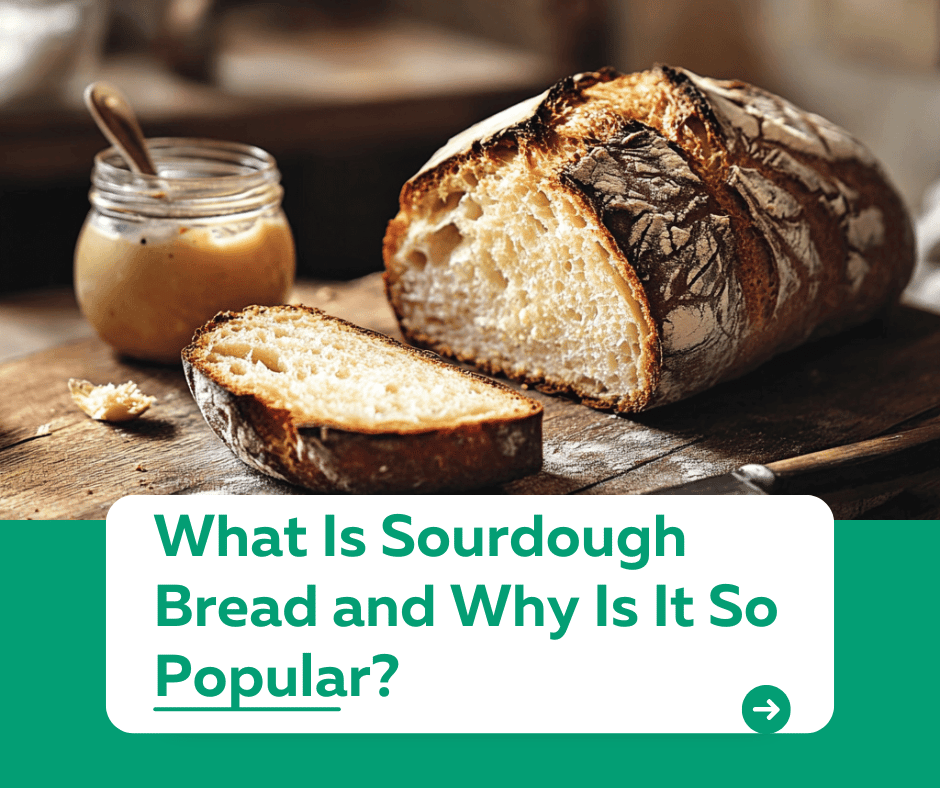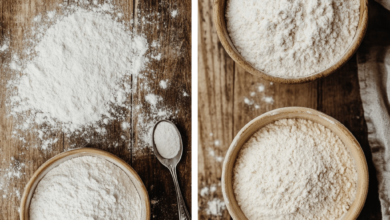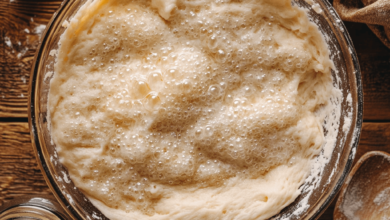What Is Sourdough Bread and Why Is It So Popular?

Introduction
“What is sourdough bread?”
Sourdough bread has been a staple for centuries, but it’s seen a resurgence in popularity recently. With its tangy flavor, chewy texture, and health benefits, sourdough is loved by bakers and foodies alike. But what exactly makes it different from other bread? Let’s explore the science, history, and benefits of sourdough bread.
1. What Makes Sourdough Bread Unique?
Sourdough bread is made using a natural fermentation process that relies on wild yeast and bacteria present in a sourdough starter. Unlike conventional bread that uses commercial yeast, sourdough develops its flavor and texture over time.
- Key Components:
- Sourdough Starter: A mixture of flour and water that captures wild yeast and bacteria.
- Fermentation: The natural process that produces the bread’s signature tangy flavor.
- Why It’s Different:
- No commercial yeast is used.
- Longer fermentation enhances flavor and texture.
Fun Fact: Each sourdough starter has a unique microbial composition, making every loaf one of a kind!
2. A Brief History of Sourdough Bread
Sourdough is one of the oldest forms of leavened bread, dating back thousands of years.
- Ancient Roots: Originated in ancient Egypt, where wild yeast fermentation was discovered.
- Modern Revival: The COVID-19 pandemic brought sourdough back into the spotlight, as many people started baking at home.
Interesting Note: Sourdough was the primary bread type during the California Gold Rush, earning it the nickname “San Francisco Sourdough.”
3. Why Is Sourdough Bread So Popular?
Sourdough’s appeal lies in its flavor, health benefits, and artisanal nature.
- Flavor: The tangy taste and chewy texture set it apart from other breads.
- Health Benefits:
- Easier to digest due to natural fermentation.
- Contains lower levels of gluten than conventional bread.
- Rich in probiotics and nutrients.
- Artisan Appeal: The hands-on process makes every loaf feel special.
Pro Tip: The longer fermentation process can also reduce the glycemic index of sourdough bread, making it a better option for some diets.
4. How Is Sourdough Bread Made?
Making sourdough requires time, patience, and a little science.
Basic Steps:
1️⃣ Create a Starter: Mix flour and water, then allow it to ferment over a few days.
2️⃣ Prepare the Dough: Combine the starter with flour, water, and salt.
3️⃣ Ferment: Let the dough rise slowly to develop flavor and texture.
4️⃣ Shape and Bake: After shaping, bake the dough in a hot oven to create a crusty loaf.
Fun Challenge: Sourdough requires care and feeding, making it more than just a recipe—it’s a hobby!
Conclusion
Sourdough bread isn’t just food; it’s an experience. Its natural fermentation, tangy flavor, and health benefits make it a favorite among bakers and food lovers alike. Whether you’re baking your first loaf or savoring a slice, sourdough offers a delicious connection to history and tradition.
For more insights into baking and kitchen tips, visit our Kuestion.com.




